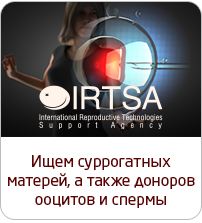Impact of preimplantaton genetic screening
The low success rate of in vitro fertilisation (IVF) – just over 28% for women under 35 and lower for older women in the UK – is partly attributable to the failure of aneuploid embryos (those with an abnormal number of chromosomes) to implant properly.
Most such embryos would be non-viable in any case, and even the least severe forms of aneuploidy have significant clinical effects; for example, resulting in Down Syndrome, Edwards Syndrome and Patau Syndrome.
In order to increase the chances of establishing a successful pregnancy, pre-implantation genetic screening (PGS) can be used to identify and select chromosomally normal embryos for implantation. Over recent years, techniques for embryo biopsy and analysis have been rapidly developing . Although there have been reports of the success of these techniques, there are still doubts over the benefits of PGS.
In a report published in the journal Fertility and Sterility, Munne et al have reviewed the different steps that compose optimal PGS techniques to determine how effective they are at improving the success of rate of assisted reproduction [Munne et al (2010) Fertil. Steril. 94(2):408-30].
They found that there were variations between laboratories in the analytical techniques used (FISH, array CGH or embryo selection based on morphology), the cell biopsied and how it is removed and the number and types of chromosomes that are analysed. All these factors, along with the skill of the embryologist, contributed to the success the success of implantation.
Based on this review, the authors suggest that an improved implantation rate can be achieved by considering a number of factors that contribute to the success of the screening procedure. This includes using the technique with patients of appropriate maternal age, ensuring samples are handled carefully and that error rates of the technique are low. They recommend analysis of chromosomes X, Y, 13, 15, 16, 18, 21, and 22 at a minimum and using laboratories that have a less than 10% error rate.
In addition, they suggest that newer techniques such as array CGH may be more desirable over traditional techniques such as FISH, as they allow analysis of a larger number of chromosomes and can minimize embryo damage and error rates. However, they recognise that these techniques will also require appropriately trained and skilled embryologists to ensure their success.
Posted by By Dr Sowmiya Moorthie









